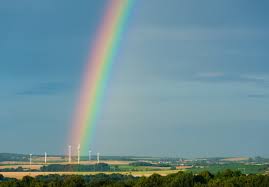Stamp: Dove and Olive Branch (Israel 2008)
Dove and Olive Branch (Israel 2008)
14 May (Israel ) within release Noah's Ark goes into circulation Stamp Dove and Olive Branch face value 2.25 Israeli new shekel
| Stamp Dove and Olive Branch in catalogues | |
|---|---|
| Michel: | Mi: IL 1994 |
| Stanley Gibbons: | Sg: IL 1892d |
Stamp is square format.
Also in the issue Noah's Ark:
- Booklet - Noah's Ark special cover - 2 X - Reprint face value 13.25;
- Stamp - Camels, Giraffes, Zebra, Elephants, Whale face value 2.25;
- Stamp - Dove and Olive Branch face value 2.25;
- Stamp - Lions, Wolf face value 2.25;
- Stamp - Noah and Family, Animals, Leaving Ark face value 2.25;
- Stamp - Peafowl, Bears, Tiger face value 2.25;
- Stamp - Wolf, Leopards, Goats, Kangaroos face value 2.25;
Stamp Dove and Olive Branch it reflects the thematic directions:
Animals are multicellular, eukaryotic organisms of the kingdom Animalia (also called Metazoa). All animals are motile, meaning they can move spontaneously and independently, at some point in their lives. Their body plan eventually becomes fixed as they develop, although some undergo a process of metamorphosis later on in their lives. All animals are heterotrophs: they must ingest other organisms or their products for sustenance.
Birds (Aves), a subgroup of Reptiles, are the last living examples of Dinosaurs. They are a group of endothermic vertebrates, characterised by feathers, toothless beaked jaws, the laying of hard-shelled eggs, a high metabolic rate, a four-chambered heart, and a strong yet lightweight skeleton. Birds live worldwide and range in size from the 5 cm (2 in) bee hummingbird to the 2.75 m (9 ft) ostrich. They rank as the class of tetrapods with the most living species, at approximately ten thousand, with more than half of these being passerines, sometimes known as perching birds. Birds are the closest living relatives of crocodilians.
The olive, botanical name Olea europaea, meaning 'European olive', is a species of small tree or shrub in the family Oleaceae, found traditionally in the Mediterranean Basin, with wild subspecies found further afield in Africa and western Asia. When in shrub form, it is known as Olea europaea 'Montra', dwarf olive, or little olive. The species is cultivated in all the countries of the Mediterranean, as well as in Australia, New Zealand, North and South America and South Africa. It is the type species for its genus, Olea. The tree and its fruit give their name to the Oleaceae plant family, which also includes species such as lilac, jasmine, forsythia, and the true ash tree.
A rainbow is an optical phenomenon caused by refraction, internal reflection and dispersion of light in water droplets resulting in a continuous spectrum of light appearing in the sky. The rainbow takes the form of a multicoloured circular arc. Rainbows caused by sunlight always appear in the section of sky directly opposite the Sun. Rainbows can be caused by many forms of airborne water. These include not only rain, but also mist, spray, and airborne dew.




